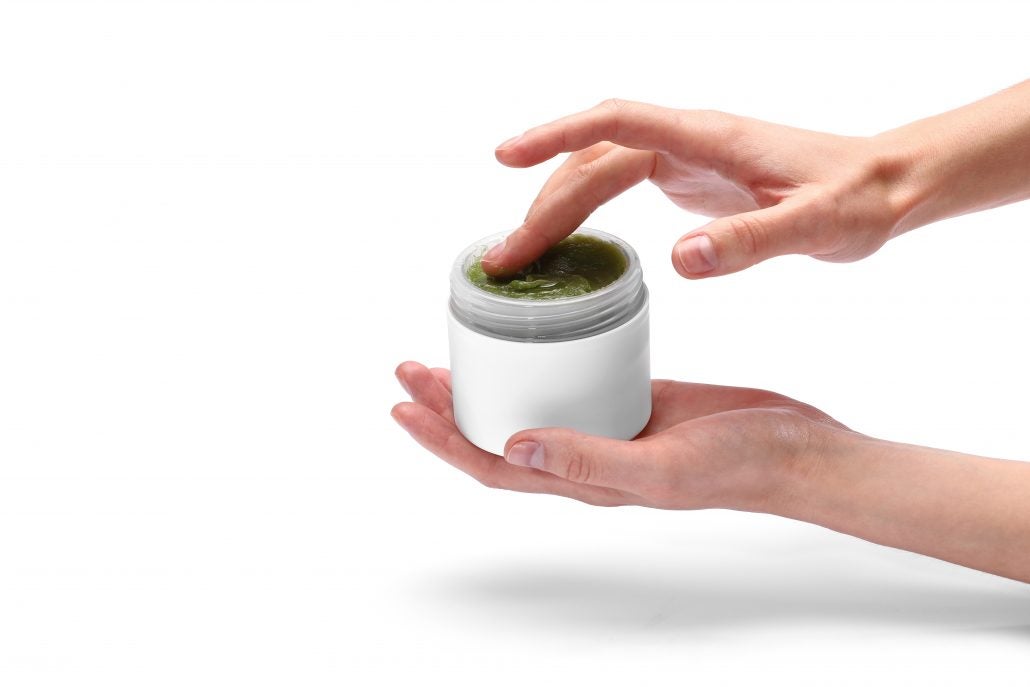Medical cannabis is one of Canada’s fastest-growing markets and an increasingly popular alternative to prescription painkillers, especially in light of the ongoing opioid crisis. If you’re struggling with a chronic condition and want to know more about cannabis’ pain-relieving effects, let’s look at how it works and some of the best weed for pain.
- Keep in mind: cannabis is still illegal in many countries. While the legalization of medical cannabis is spreading across the world, only Canada, South Africa, Uruguay, and Georgia (the country, not the American state) have legalized recreational cannabis use.
Due to cannabis being illegal for so long, there’s not much conclusive research regarding its efficacy for all types of pain. In Canada, it was banned for almost a century before it was legalized in 2018 (You can thank anti-cannabis propaganda and the War on Drugs for that!).
It’s depressing to think about how far we could’ve gotten with medical cannabis and all the advances we missed out on. After all, in 100 years, we went from Edison’s lightbulb to the internet!
But thankfully, that is changing, and most of the research that’s out there, along with anecdotal evidence, suggest that weed can help alleviate pain, chronic or otherwise.
Which cannabis cultivars are known to help with pain? To answer that, let’s start with how it affects you.
How Might Cannabis Help with Pain?
While there’s still a lack of definitive research surrounding medicinal cannabis, medical professionals are pretty optimistic about its use. Cannabis has been used for medicinal and spiritual purposes for thousands of years, after all.
Research suggests that cannabis is useful for pain management thanks to its many natural chemical properties, such as cannabinoids. While the most famous cannabinoids are THC and CBD, more than 100 have been found so far!
The critical difference between THC and CBD: THC gets you high. CBD doesn’t.
These cannabinoids activate different receptors in your endocannabinoid system– involved in functions like sleep, mood, appetite, and pain, among others- by stimulating or inhibiting chemicals in the brain.
But the strain you’re using makes a big difference—strains with high CBD content will work differently (and have different effects) than your classic THC strains.
Generally, what scientists understand is that CBD binds to endocannabinoid receptors, lessening your body’s awareness of pain and reducing inflammation.
THC is also a partial CB1 receptor agonist that can help with inflammation, but it impacts slightly different systems than CBD.
On top of that, different THC strains come with different effects. Indica strains are commonly believed to have high pain reduction, but your favourite will depend on your body chemistry and pain needs.
The best weed for back pain can be different from the best weed for migraines, and the effects will vary from person to person.
There are a few things you’ll want to consider when it comes to picking a cannabis strain for managing your pain.

Is THC or CBD Better for Pain?
The best kind of weed for pain will depend on your lifestyle and the type of pain.
There’s no definitive answer on whether THC or CBD provides better pain relief, but researchers believe that there are benefits to both. CBD has more anti-inflammatory and calming properties, while THC’s euphoric high can help make the pain more manageable.
Some research even suggests that the two together might be key. CBD can be used to extend the half-life of THC’s pain-relieving benefits, providing a balancing effect.
When used alone, CBD is better for inflammatory pain, like pain from arthritis or injuries that cause muscle swelling.
But CBD might also be better for you if you’re anxious about THC’s psychoactive effects or have frequent pain but can’t be high all the time. CBD is cannabis without the psychoactive high. It’s increasingly popular for patients to use CBD oil to reduce pain, inflammation, and overall discomfort as a result.
In some cases, THC and CBD working together can create a more intense effect. It’s unique to the person that is ingesting the product and oftentimes will take some experimentation to dial in the most ideal dosage.
The ratio of CBD to THC
Hybrids containing both CBD and THC are extremely common- in fact, you’ve most likely smoked a hybrid of some sort. Pure, landrace sativas and indicas are very hard to find in their truest representations/expressions thanks to generations of growers crossbreeding sativa and indica strains for maximum potency.
- Keep in mind: when considering a sativa vs. indica strain, think of it less as a binary “it can only be this OR this” and more as a spectrum, where strains are sativa or indica dominant.
New research is showing that the titles “indica/sativa” are only useful for the grower rather than the consumer. They are used to describe the plant’s morphology/shape and have no bearing on the effects profile. The effects are experienced by each person uniquely.
Many users appreciate how THC and CBD play off each other and enhance the experience, along with the other cannabinoids- a phenomenon known as the Entourage Effect. This is why some people believe that with cannabis, the whole is greater than the sum of its parts, but the ideal ratio varies based on preference.
Perhaps you want something mostly calming with a mild high. In that case, you’ll want a ratio that’s heavier on the CBD. On the other hand, if you’re open to a more potent high, you may want something that contains more THC.
What are you smoking?
Next, you’ll want to know the differences between how the strains you see in stores are typically categorized.
- Sativa: Typically seen as relaxing but mentally stimulating, Sativa strains tend to make people feel energetic and uplifted.
- Indica: Indica strains are associated with calming, almost sedative side effects and induce more of a body high, making them better for nighttime use as a sleep aid- sometimes known as “in-da-couch.”
- Hybrids: Created by crossbreeding Sativa and Indicas, hybrid strains have a unique balance of the two. As such, the effects and feel of a hybrid strain will vary depending on the plant’s makeup.

The actual taste of the strain you’re using:
If you’re only using weed for pain, you might not care much about flavour, but with the cannabis market being what it is, there’s no reason to settle for a less than great taste.
If you know what strains you like, see if you can find it in different products. For example, if you like the indica-dominant Lindsay OG, look for a Lindsey OG-derived oil for vaping.
Terpenes and flavonoids are responsible for the smell and taste of cannabis, and there’s a good chance you can find the terpene profile of your favourite strain online, especially if it’s a popular one. The relationship between the flavonoids and terpenes can bring out the best of each other.
- Tip: Knowing your terpenes can help you find similar strains once you know what you like. If you like a strain that’s high in a particular terpene, then try looking for other strains with that terpene could lead you to some new favourites. For more info on terpenes, click here.
Knowing what flavours and effects you want from your weed is something you’ll pick up as you get more familiar with the different strains.
(Contact us at [email protected] if you need help finding cannabis for pain management. Our knowledgeable support team is always happy to help with great recommendations.)
Here are some of the best strains of weed for chronic pain and pain management:
- Tom Ford Pink Kush – heavy, stoney, dozy, body centred.
- Mint Chocolate Chip: Notes of Diesel, Spice, Floral, Citrus that brings a Euphoric, Soothing vibe. Referred to by our QA manager has having a “therapy blanket” effect.
- Blue Dream – Known for its sweet flavour, Blue Dream is a legendary sativa-leaning hybrid that lends to an energetic high
Is Topical Cannabis Better for pain?
That will depend on you and your pain. Topical ointments are potent for inflammation and pain relief, but they are more limited in their treatment options. They can’t help in treating conditions like glaucoma, epilepsy, and nausea, for example.
Topicals are applied externally, usually in the form of balms and creams, making them different from smoking, vaping, edibles, tinctures, and capsules- all of which are ingested.
Topicals allow you to do cannabis spot treatments on your body, which could work for you if you have a condition like arthritis because you could just apply the cannabis topical to the areas you’re sore.
But topicals are more difficult to dose accurately, don’t last as long, and aren’t as strong, which can be a pro or con depending on your needs.

Cannabis, chronic pain and mindfulness
I want to speak personally about managing chronic pain with cannabis. As pain is a signal that your brain receives from the body part in question, it’s involuntary, but at the same time, the amount of attention you give an injury/pain point is something you can control.
I’m not saying that you can use mindful approaches to make a painful injury feel like nothing at the drop of a hat, but it’s something one can improve upon with practice.
Fortunately, THC has a wonderful ability to draw your focus towards what’s presently enjoyable in the moment, which is in itself a form of pain management.
There is a flip-side to that coin, in that if your stoned focus is on your pain point, it may make it seem worse and snowball.
But cannabis helped me deal with my pain, and I hope my experience can help you. I found using cannabis for pain was most effective when coupled with a mindful approach, and that was no surprise as practicing mindfulness and meditation has been proven to do wonders for your mental health.
Conclusion
There is enormous potential in using medical cannabis for pain relief, and it shows particular promise in reducing our dependence on prescription painkillers.
Finding the right cannabis strain depends on you and your individual needs, and it will influence whether you go for strains high in THC or CBD. While CBD has a calming effect with anti-inflammatory properties, the euphoric high from THC can also make the pain easier to manage.
Find a strain with the right CBD : THC ratio for you. It will take some trial and error to find the right mix of cannabinoids and your favourite method of consumption, but once you do, it will be worth it.
Just have a mindful approach, keep your senses open, and enjoy the journey.

Featured image Hand photo created by user14636459 – www.freepik.com.
Resources
Leafly: The entourage effect: How cannabis compounds may be working together.
